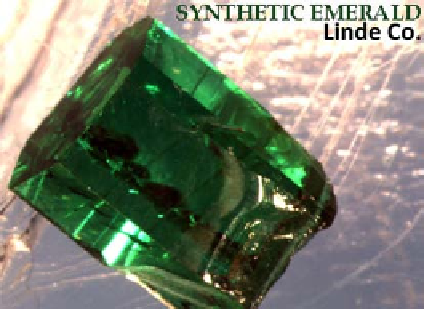Geoscience Reference
In-Depth Information
25
C were employed.
The Al was supplied from gibbsite Al(OH)
3
, Be from Be(OH)
2
, Si from crushed
crystals of quartz, and Cr from CrCl
3
.6H
2
O. Growth rates as high as 1/3 mm/day
could be attained. The pressure vessel was lined with gold.
Yancey
[149]
could attain a growth rate of 0.8 mm/day using the above experi-
mental conditions.
Figure 7.30
shows the schematic diagram for hydrothermal
growth of emeralds
[142]
. In 1971, Vacuum Ventures Inc. bought the installation
from Linde and supplied synthetic emeralds using the trade name “Regency emer-
ald.” Regency emerald has the same inclusions as Linde emerald, and growth con-
ditions of Regency emerald are considered to be identical to those of Linde
emerald
[150]
. Chlorine was detected in hydrothermally grown Regency and Linde
emerald
[151,152]
. It seems that chlorine must have been derived either from
resulting from a 62% fill. Small temperature gradients of 10
Figure 7.29 Emeralds grown
hydrothermally by the Linde Co.;
the size of the crystal is
50
3
22
3
6mm
3
[143]
.
Figure 7.30 Schematic diagram for
hydrothermal growth of emeralds.
Source: After Nassau
[142]
.
Steel cap
H
2
O + mineralizer
Steel bomb
Precious metal
liner
SiO
2
nutrient
Seed plates
Al
2
O
3
+ BeO
Nutrient






































